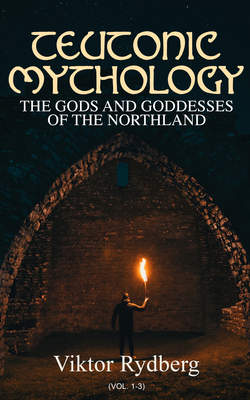Читать книгу Teutonic Mythology: The Gods and Goddesses of the Northland (Vol. 1-3) - Viktor Rydberg - Страница 43
На сайте Литреса книга снята с продажи.
ОглавлениеIn interpreting the mythic contents of this story we must remember that the lad who came with the sheaf of grain to Scandia needed the help of the sun for the seed which he brought with him to sprout, before it could give harvests to the inhabitants. But the saga also indicates that the sun-dis had veiled herself, and made herself as far as possible unapproachable, and that when Heimdal had forced himself into her presence she fled to northern ice-enveloped regions, where the god and his foster-son, sword in hand, had to fetch her, whereupon a happy marriage between him and the sun-dis secures good weather and rich harvests to the land over which he rules. At the first glance it might seem as if this myth had left no trace in our Icelandic records. This is, however, not the case. Its fundamental idea, that the sun at one time in the earliest ages went astray from southern regions to the farthest north and desired to remain there, but that it was brought back by the might of the gods who created the world, and through them received, in the same manner as Day and Night, its course defined and regularly established, we find in the Völuspa strophe, examined with so great acumen by Julius Hoffory, which speaks of a bewilderment of this kind on the part of the sun, occurring before it yet "knew its proper sphere," and in the following strophe, which tells how the all-holy gods thereupon held solemn council and so ordained the activity of these beings, that time can be divided and years be recorded by their course. Nor is the marriage into which the sun-dis entered forgotten. Skaldskaparmal quotes a strophe from Skule Thorsteinson where Sol[12] is called Glenr's wife. That he whom the skald characterises by this epithet is a god is a matter of course. Glenr signifies "the shining one," and this epithet was badly chosen
if it did not refer to "the most shining of the Asas," hvítastr ása—that is, Heimdal.
The fundamental traits of "King Ruther" resemble Saxo's story. There, too, it is a king who undertakes a perilous journey of courtship and must fight several battles to win the wondrous fair maiden whose previous suitors had had to pay for their eagerness by having their heads chopped off and fastened on poles. The king is accompanied by Berter, identical with Berchtung-Borgar, but here, as always in the German story, described as the patriarch and adviser. A giant, Vidolt—Saxo's Vitolphus, Hyndluljod's Vidolfr—accompanies Ruther and Berter on the journey; and when Vitolphus in Saxo is mentioned under circumstances which show that he accompanied Borgar on a warlike expedition, and thereupon saved his son Halfdan's life, there is no room for doubt that Saxo's saga and "King Ruther" originally flowed from the same mythic source. It can also be demonstrated that the very name Ruther is one of those epithets which belong to Heimdal. The Norse Hrútr is, according to the Younger Edda (i. 588, 589), a synonym of Heimdali, and Heimdali is another form of Heimdall (Isl., i. 231). As Hrútr means a ram, and as Heimdali is an epithet of a ram (see Younger Edda, i. 589), light is thrown upon the bold metaphors, according to which "head," "Heimdal's head," and "Heimdal's sword" are synonyms (Younger Edda, i. 100, 264; ii. 499). The ram's head carries and is the ram's sword. Of the age of this animal symbol we give an account in No. 82. There is reason for believing that Heimdal's helmet has been conceived as decorated with ram's horns.[13] A strophe quoted in the Younger Edda (i. 608) mentions Heimdal's helmet, and calls the sword the fyllr of Heimdal's helmet, an ambiguous expression, which may be interpreted as that which fills Heimdal's helmet; that is to say, Heimdal's head, but also as that which has its place on the helmet. Compare the expression fyllr hilmis stóls as a metaphor for the power of the ruler.
